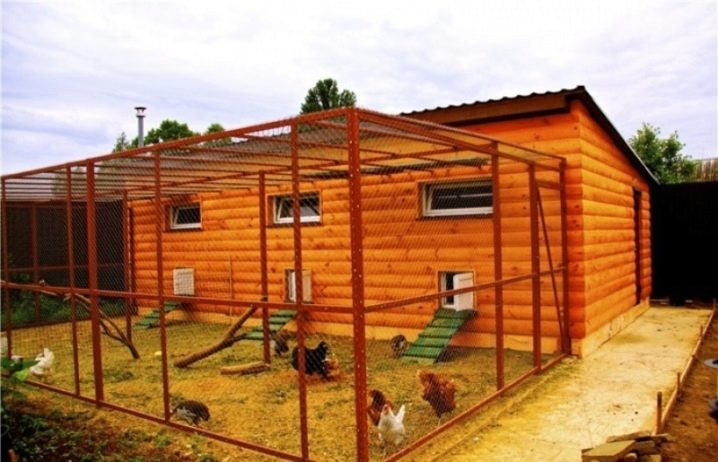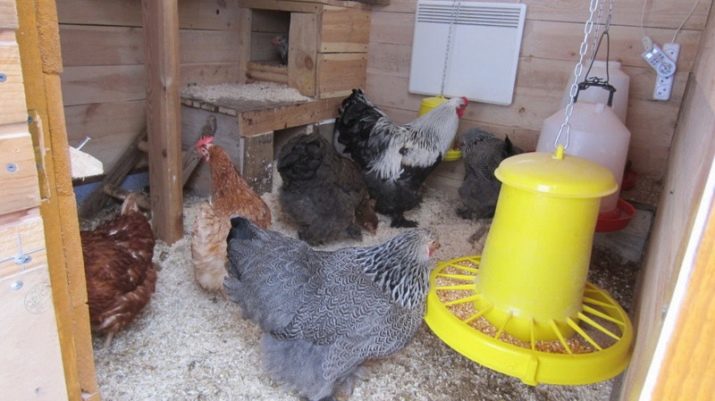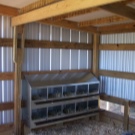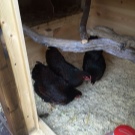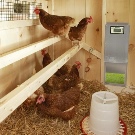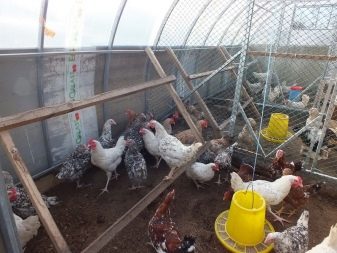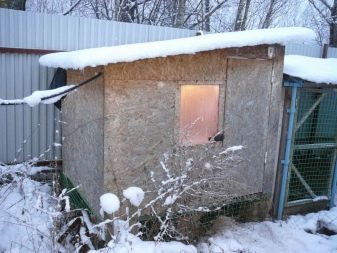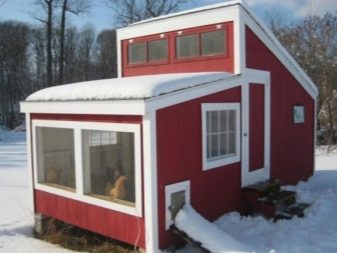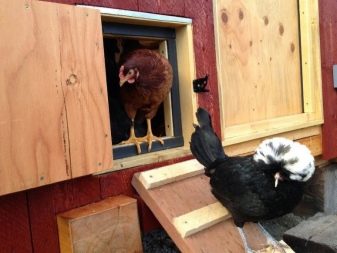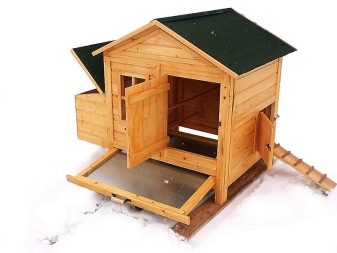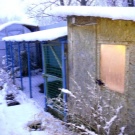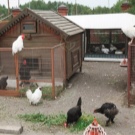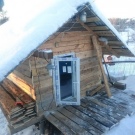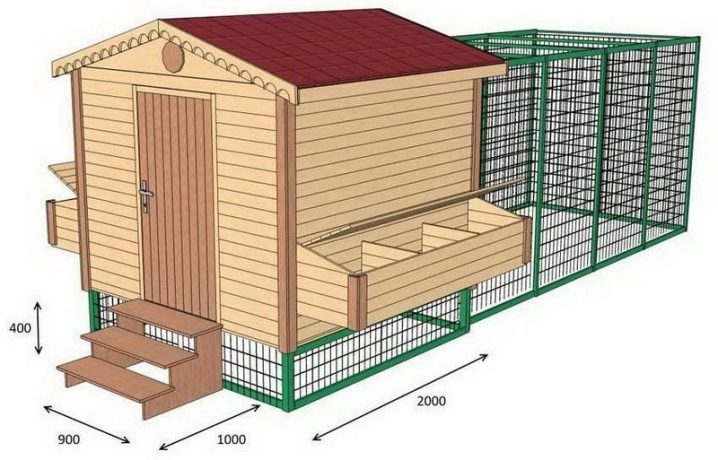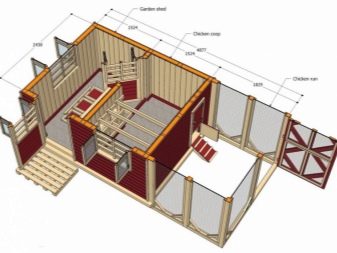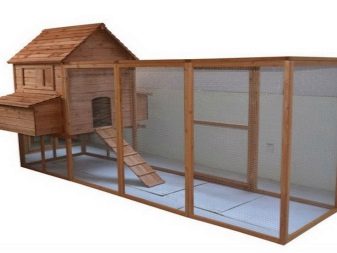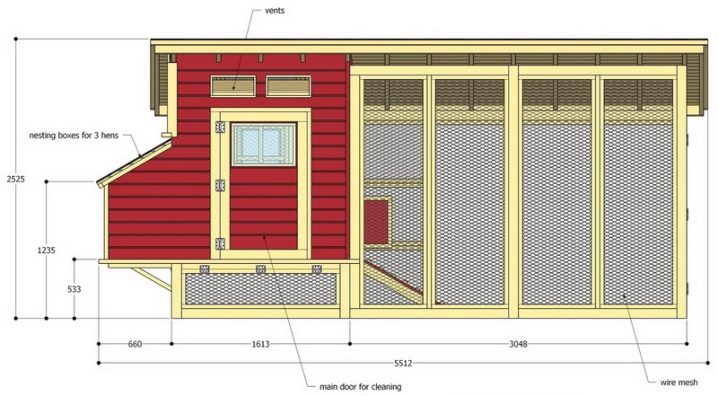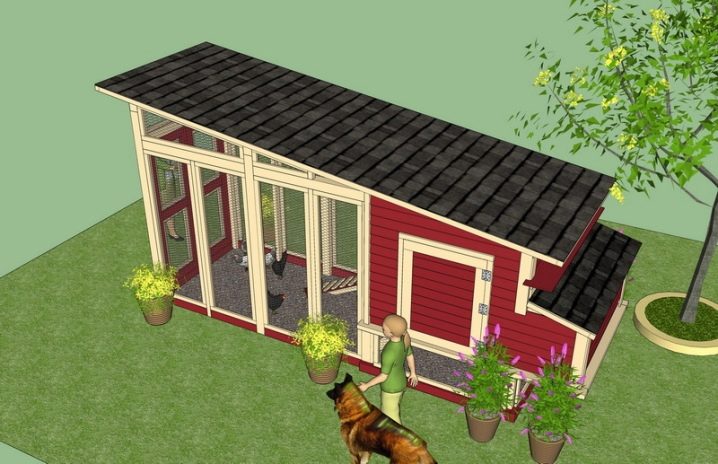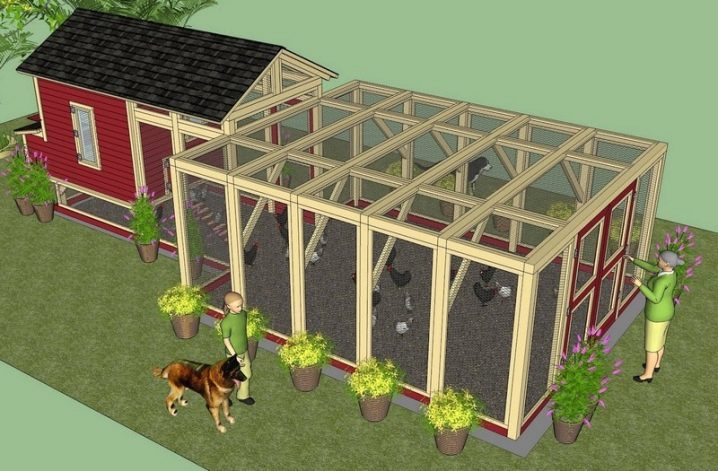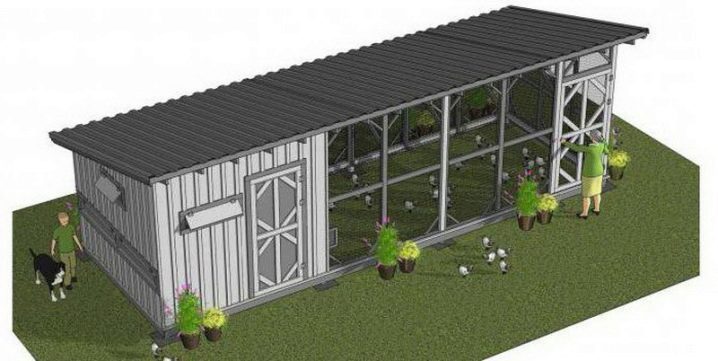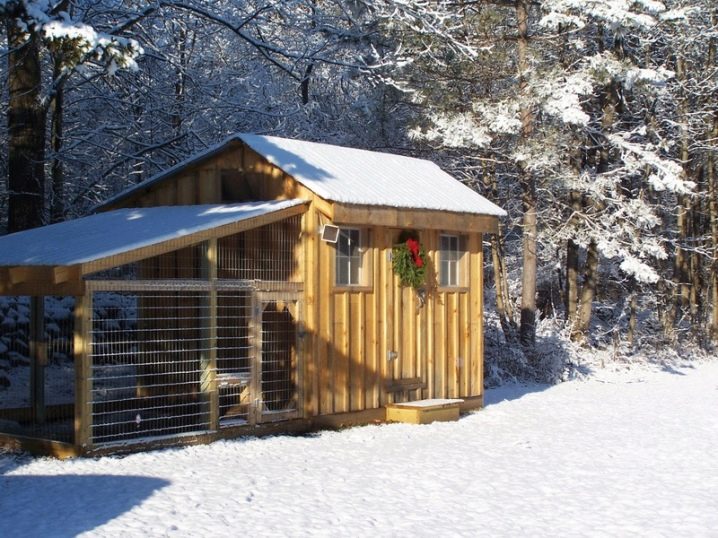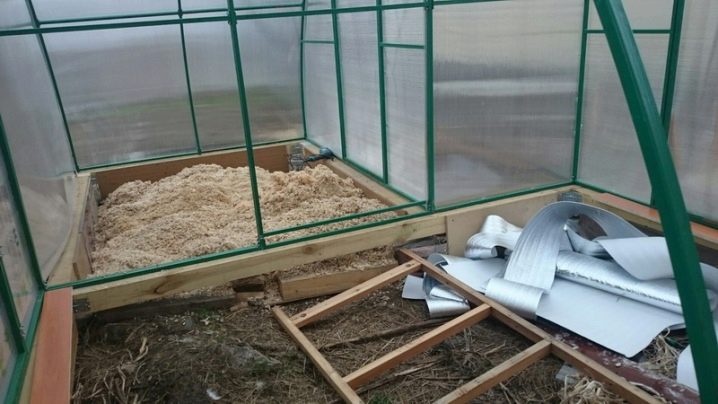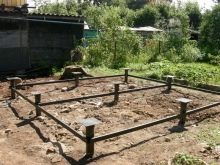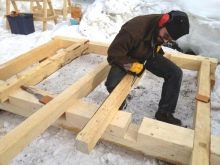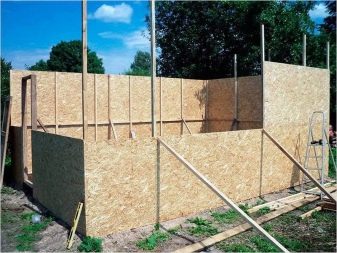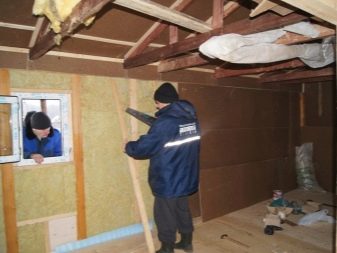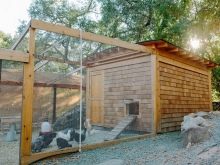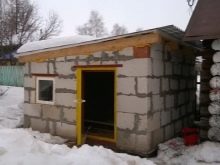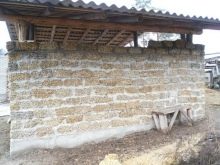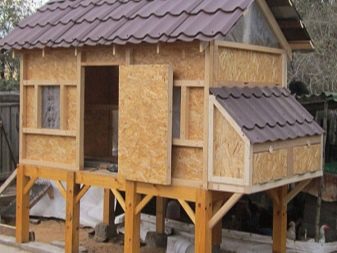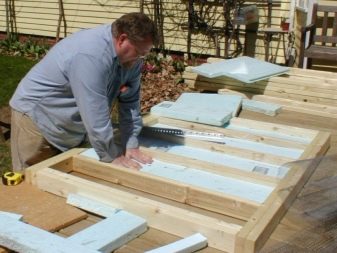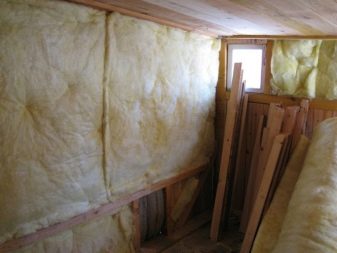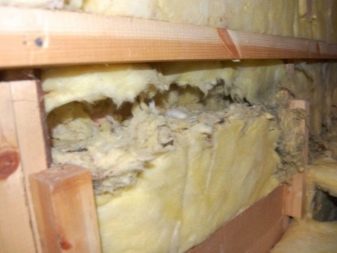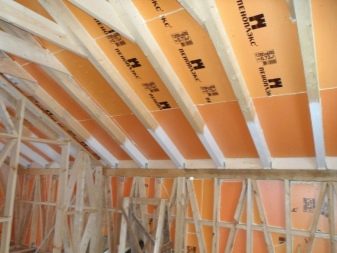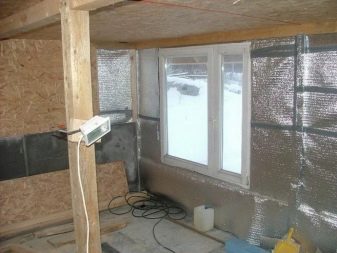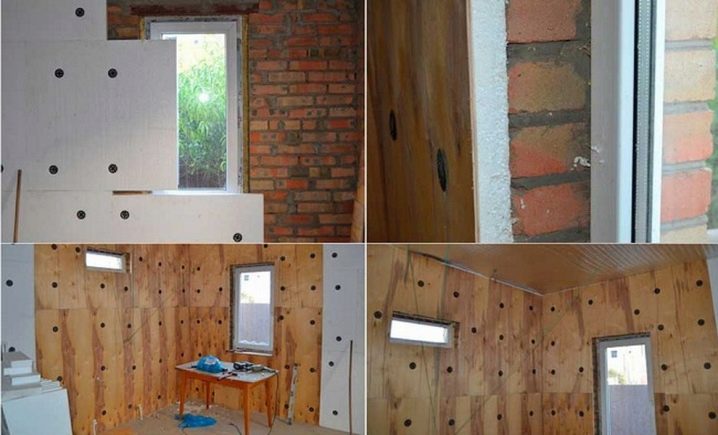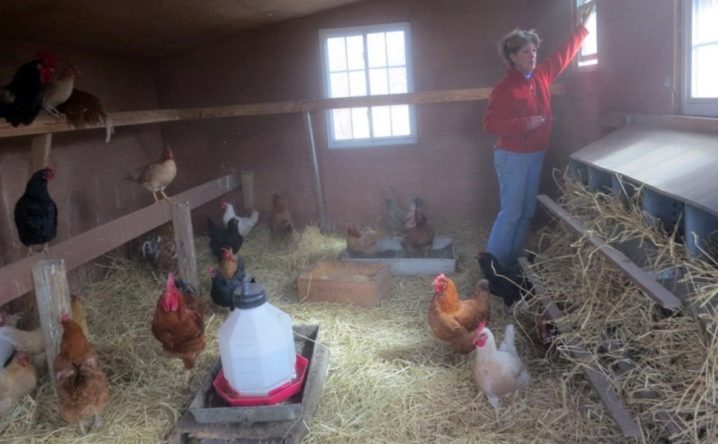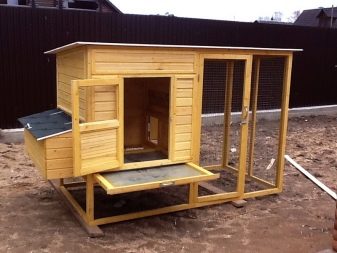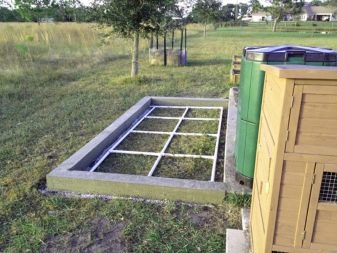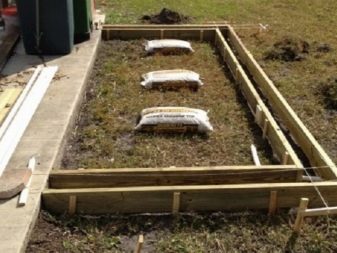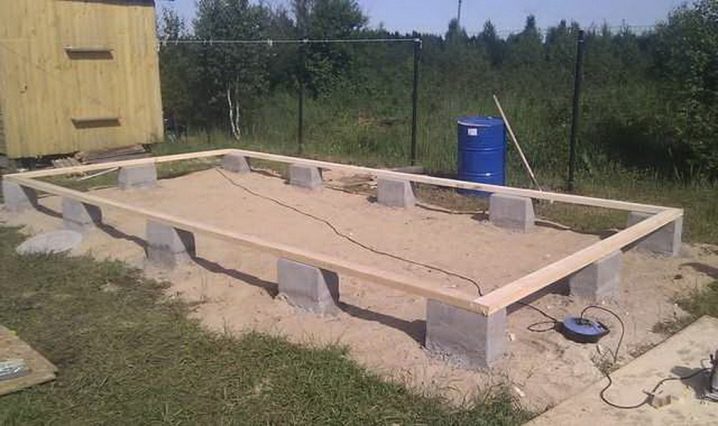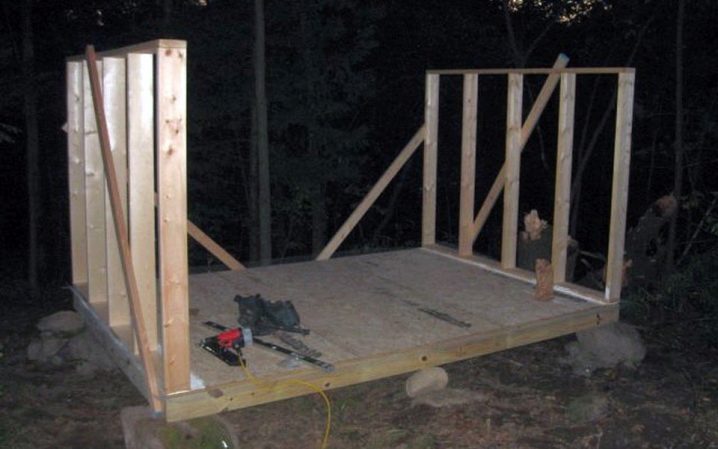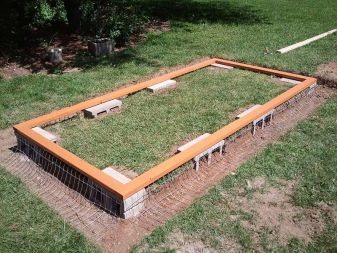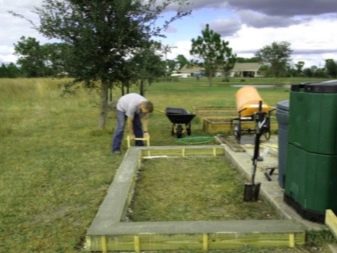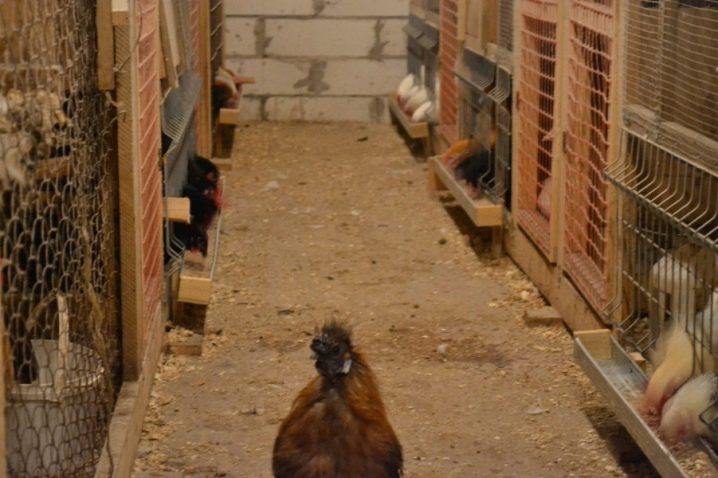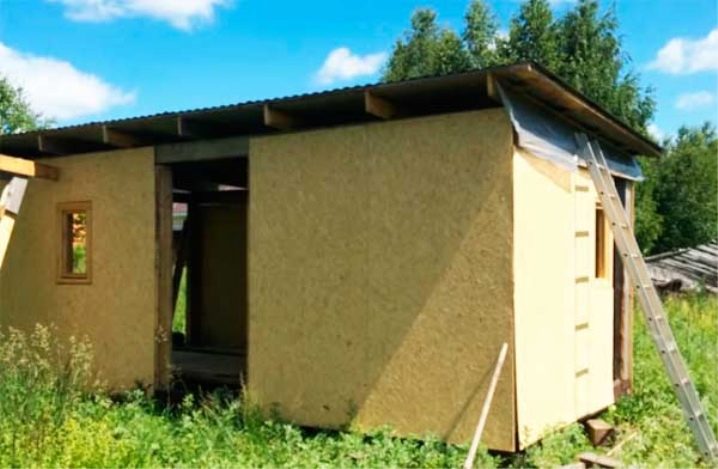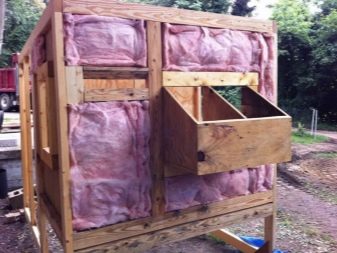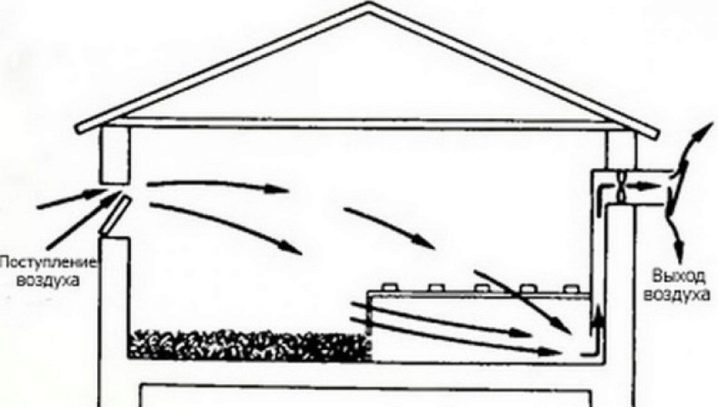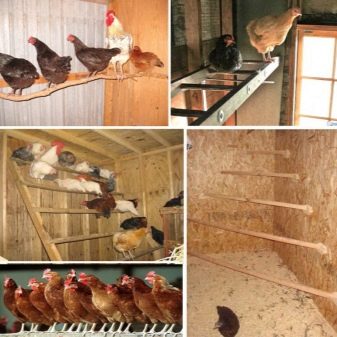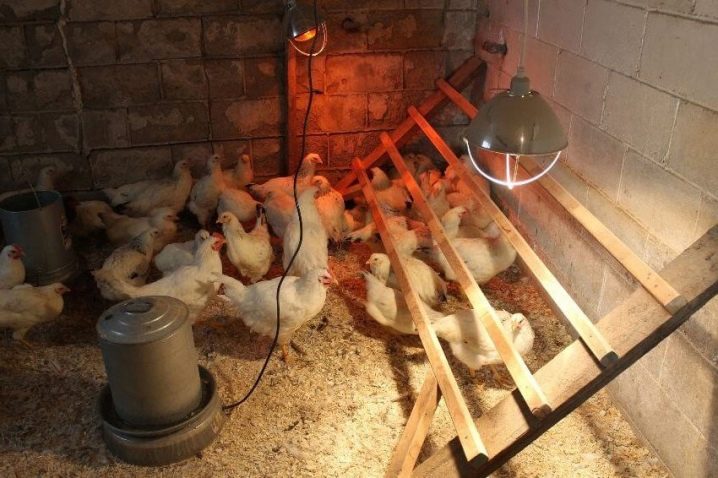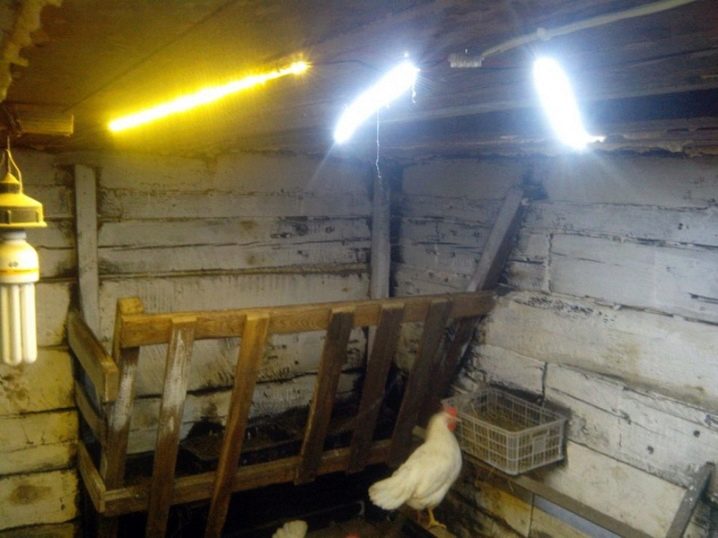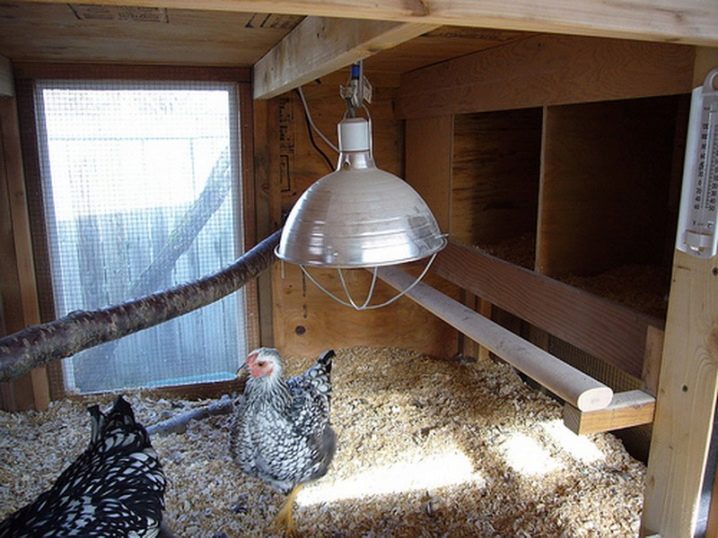Winter chicken coops: projects and construction process
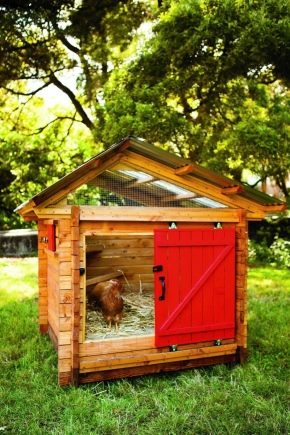
Today, many farmers and dacha owners breed poultry. But few of them know that this living environment requires comfortable living conditions. Otherwise, the chickens may start to hurt and will not produce many eggs. Today we learn what are reliable winter chicken coops and how they can be built with your own hands.
Special features
If you plan to keep and breed chickens throughout the year, then you just need to have a good winter chicken coop on your plot. Only in the presence of such an erection will it be possible to receive eggs from chickens all year round, since at low temperatures they do not rush.
If we are talking about keeping chickens in the warm season, it is quite acceptable to use plain or old buildings. For example, many people place similar animals in old barns. While the weather is warm in the yard, the bird lives in these conditions comfortably. If we are talking about colder seasons, then these outbuildings will not be enough. That is why it is so important to pay due attention to the preparation of high-quality winter “housing” for poultry.
The most difficult period for chickens lasts from late autumn to early spring. So, in summer and spring, birds behave quite actively - they bathe, dig the ground, run and move a lot in general. In winter, their activity decreases markedly. In conditions of decreasing temperature and short daylight, the ability of chickens to carry eggs in large quantities also ceases to be relevant.
In the conditions of a high-quality winter coop, an optimal and comfortable temperature must be maintained. You can not do in such a building and without suitable lighting. Together with not too high perches and separate places for laying eggs, there are very favorable conditions for the birds to live.
Requirements for construction
If you want to equip a comfortable “dwelling” for chickens in which they will not freeze in winter, then you should know that such a building must meet several requirements. Only buildings erected in accordance with all standards will prove to be truly comfortable and efficient.
Let's see what a good winter chicken coop should be.
- It is necessary to take into account that the place for the construction of a winter chicken coop must be located on a small hill. If you follow this requirement, then during the thaw, when there is an active melting of snow, water will not penetrate into the building.
- Inside such a building a comfortable temperature should always be maintained. Coop must be warm. To follow this requirement, various heaters are commonly used. If there is no heating in such a building, then the owners of the site need to remember that it must be maintained at a temperature of + 5 + 10 degrees. Of course, these figures are approximate. The recommended temperature is +12 degrees or higher. In such conditions, chickens will rush without any problems.
- It is important to remember that the winter coop must be dry. This requirement is due to the fact that with a high level of humidity inside the building, a mold will soon start, which will surely provoke feathered diseases.
- In the winter coop should be present high-quality artificial lighting. In the summer season, a pair of small windows is enough for such a structure, but in the winter you simply cannot do without additional light bulbs. A short daylight hours will eventually lead to the fact that the birds will cease to nest, so you can not neglect the artificial lighting devices.
These requirements are most important in the construction of a winter chicken coop. In addition, we must not forget that inside the building itself should be as calm, safe and quiet as possible. Choose for the construction of the coop a place on the site, which is located far away and is in a secluded corner.
Projects
In simpler terms, the chicken coop is a kind of barn, next to which a separate place is usually organized for walking birds in comfortable conditions in the fresh air. In most cases, the area set aside for walking chickens is separated by a special mesh material with small cells.Such elements allow you to reliably protect the habitat of birds from the dangerous penetration of various predators.
The design described is permissible to take as the basis for the manufacture of a reliable winter chicken coop, especially when it comes to the construction of buildings for a small number of chickens (10-15 pieces). If the owners wish, you can consider the option of installing a more comfortable structure, which has both external and internal area for walking. However, such an erection is likely to occupy a lot of free space, so it is unlikely for a small section.
The project of one or another version of the chicken coop will be selected depending on how many birds it will live in.
There are the following options.
- 10-15 chickens. Such erections belong to the “mini” class and most often have a modest area of 10-15 square meters. m. In such conditions, the bird (both adult and chicks) will be able to move freely. For a land plot in this case, an area of 2x2 m may be allotted. At least one ventilation grid must be present in this small building.
- At 20-30 chickens. This construction is a complete barn with an area of 18-20 square meters. m. The ideal height of such a chicken coop will be a parameter of 1.8-2 m. For walking the poultry should be taken a territory of 2x3 m. In such conditions, you can easily put a longline perch, as well as installation at about 5-7 nests. If the area of the site is not too limited, then you can build a practical shed with a vestibule on it. With such a design, it will be possible to allocate a separate space specifically for walking the birds, and also to make the animal shed even warmer.
- For 50 chickens and more. For such a quantity of living creatures a more spacious construction with an area of at least 50 square meters will do. Such construction will require not only more thorough insulation, but also the installation of a heating system. The height of this structure, as in the previous version, should be no more than 2 m. For a place for walking, a 3x4 m section should be taken. It is advisable to equip the structure so that the perches are located opposite the window, and about 7-10 nests are located near the farthest wall hen house
Do not think that all variants of chicken coops have the same appearance and differ from each other only in their dimensions. In fact, such constructions may have a different appearance.For example, often in areas there are fully enclosed structures in which the space allocated for walking is in the inside. Thanks to this structure, it will be possible to avoid the devastating freezing of chickens in winter. In addition, birds can safely walk no matter what the temperature is behind the walls of the chicken coop.
Materials
For the construction of a reliable and comfortable chicken coop, designed for use in the winter, it is permissible to use many different materials, from boards to bricks. Each of them has its pros and cons, which must be borne in mind.
For the base
The coop, as well as many other erections, begin to build from a bearing foundation. The foundation in this situation will be necessary in order to protect and make more resistant walls and roof structures. If you do not make the base, the remaining structures will be subjected to constant exposure to dampness and moisture that come from wet soil. As a result, it provokes the decay and destruction of the main components of the building.
For the construction of high-quality and reliable shed for layers, designed for use in winter, suitable different base foundations of various materials.
- Columnar. Such a framework is ideal for the construction of a frame type, built from OSB sheets or dense boards. These types of foundation are made of foam concrete blocks or a mixture of concrete. Column supports in this case are fixed along the entire perimeter of the future construction.
- Pile This type of foundation is usually used in the manufacture of buildings on heaving or mobile soils. The pile foundation is metal pits recessed into the soil and located along the perimeter of the future structure. These parts are great for making wooden sheds. If the pile-rostrum structure serves as the base, then its carrying capacity is quite enough to build a chicken coop out of blocks.
- Ribbon. This type of foundation is rightfully recognized as one of the most common and reliable. It is permissible to apply to it during the construction of a barn of absolutely any dimensions. The design of the chicken coop can also be any. To prepare a similar foundation, use a mixture of concrete (preferably using a material labeled M500), steel reinforcement and edged board.
Rostverk usually made from bars 20x20 cmIt is also permissible to contact concrete solutions - in this case, the composition of the M500 would be an ideal option. Of course, the first option will be much cheaper for the consumer. If you are going to use a concrete mix, you will first need to build a formwork. In addition, to carry out such work is to be able to knit a frame of reinforcement.
The acquisition of specific materials for preparing the floor in a winter barn for chickens mainly depends on what kind of foundation is in place in the structure. For example, it is recommended to use timber, edged board or TsSP-sheets for pile or column structures. If you made a popular strip foundation, then the ideal would be floors made of concrete or other reinforcing building materials.
For walls
It is equally important to correctly select the appropriate material for the construction of the wall foundations of the chicken coop. The choice of optimal options depends on the size of the building, as well as the technology on which you are going to build it. In most cases, people turn to making walls in a barn for chickens from a bar or OSB sheet. A bar or board of large thickness (not less than 22 mm) is very often used in the course of preparing a frame base.In the future, the frame is complemented by trim, that is, OSB-sheets both inside and outside.
To prepare high-quality capital walls of a winter chicken coop, it is permissible to use such building materials.
- Shellfish. This material is natural and is characterized by very low thermal conductivity. It is ideal for preparing a winter chicken coop for 25-30 hens. The shell itself is a rectangular block with a size of 180x180x380 mm.
- Foam concrete. It is an environmentally friendly and safe material that can be used to make the walls of a chicken coop of any size. In most cases, for the construction of walls using foam brands M400. As for the thickness of the floors, which are obtained from such building materials - it will depend on the climate conditions in the region of your residence.
- Brick. This material is most often used in the construction of load-bearing walls. The main feature of a brick is its minimum thermal conductivity, as well as a surprisingly long service life. In the manufacture of the capital coop it is recommended to use this building material, especially if we are talking about a large structure for 50 or 100 birds. It is permissible to use both hollow and corpulent elements.
Choosing suitable building materials for the walls, it is necessary to take into account for how long it is planned to manufacture the chicken coop. If you are a novice and while trying yourself in the role of a farmer who breeds poultry, then it is better to give preference to bars or OSB sheets. Over time, a chicken coop made of these building materials can be disassembled and made larger by building an extension. If you are an experienced breeder, keep a lot of layers and are going to put a permanent structure on the plot, it is better to give preference to a brick or a foam block. Of course, such an erection will cost more than wood, but it will last much longer.
For insulation
If you are going to build a winter chicken coop, you will not be able to do without additional insulation materials. They are used for insulation of such bases as floor, walls and floors. To this end, it is permissible to buy a variety of products. So, the most affordable are the usual eco-friendly sawdust, expanded clay or dried hay. For additional finishing of the floor or ceiling, in most cases, it is chosen clay, and for the walls - hay and sawdust.
However, the use of such natural materials has a significant drawback - such products have a high coefficient of thermal conductivity, because of which they have to be laid very thick layers, and this is not always possible in the conditions of preparing the chicken coop for the winter.
Of course, there are more thought-out insulating materials that are used in the manufacture of various buildings and outbuildings.
- Styrofoam. It is a heater with many cells in its structure. It has excellent thermal performance, and its coefficient of thermal conductivity is lower than that of the same foam concrete or brick. In stores, foam is sold in the form of slabs of various sizes. It is very convenient to install this heater on the ceiling and walls. However, you need to consider that foam is a favorite "dish" of rodents.
- Mineral wool. Very popular in our time insulation, which also boasts excellent heat and sound insulation characteristics. It is not subject to attacks by rodents and other parasites. It is recommended to install it together with special reflective membrane materials.
- Extruded polystyrene foam. This is a modern insulation consisting of cells. It has a closed structure, which is based on foamed polystyrene foam. Such insulation is in great demand because it serves for a very long time and has many positive qualities. In many ways extruded polystyrene is superior to such products as foam plastic, mineral wool, expanded clay and other options.
- Stizol. This insulation is also used as an effective sound insulation material. It is based on polyethylene foam. Styzol is characterized by resistance to moisture and moisture, as well as good heat engineering properties. This material is issued with different "front" surfaces. For example, it can be a foil, non-woven fabric or a special metallized film.
When choosing the ideal insulation for a winter chicken coop, it is very important to pay attention to its cost, as well as to the size of the surface that you are going to insulate. So, for small sheds it is enough to have styzol or other suitable materials based on foamed polyethylene.For registration of chicken coops, designed for the content of 50 (or more) layers, you can use the combined options. For example, it is permissible to warm the floor with expanded clay, and walls with expanded polystyrene. If you want to save money, you can buy good old foam or mineral wool in the company with styzol.
How to build and insulate?
As mentioned earlier, it is not difficult to build a warm winter chicken coop yourself. Even a newcomer who has not done anything like this before will be able to cope with such work. The best results will be achieved if you strictly follow the instructions and apply only high-quality and environmentally friendly building materials.
Preparatory work
Before proceeding directly to the construction of a winter chicken coop, you will need to carry out a number of preparatory work. To do this, you first need to choose a specific place for the placement of such an outhouse, make an accurate drawing of the future construction, as well as carefully calculate the amount of materials required.
Choosing a specific place on the site for the construction of the barn, you need to keep in mind some of the nuances.
- You should not have a dwelling place for birds in the lowlands or on the slopes. It is desirable to give preference to vacant places located on higher ground.
- Do not forget that the hens, like many other animals, are very afraid of excessive noise. For this reason, experts strongly recommend building sheds for them as far as possible from roads and other sources of noise.
- When selecting a specific site for building a chicken coop, it must be borne in mind that the health of chickens will largely depend on the amount of sunlight. In order to freely enter the inside of the chicken coop, the building must be on the south side.
If the soil on the site is clay, marshy or loamy, you will first need to carry out drainage work. If we neglect this procedure, the carrier basis of the construction will quickly become useless. As soon as you find the optimal place for the coop, you will need to start drawing up a drawing.
Foundation
When choosing a particular type of foundation, it is necessary to take into account the total weight of the future construction. So, for the construction, designed to live 15-20 chickens, the best fit pile or columnar basis.To start pouring the foundation, you will need to make a markup of the site allocated for construction. It will need to be leveled using a regular spade. Next, small pegs made of wood should be hammered into the ground and a special rope should be stretched between them.
Then, in the corners of the marked area, wells will need to be prepared for fixing the concrete supports. The depth of the wells should be about 56-60 cm. You can dig them with a shovel or a drill. At the same time, the dimensions of the wells themselves should be 30x30 cm. If you are going to build a chicken coop, the length of which is more than 6 m, then it is recommended to build a concrete grillage. To do this, it will be necessary to dig a trench to a depth of 20 cm around the perimeter of the territory with exposed markings. At its bottom you will need to pour gravel and sand (10 cm each). Each layer will need to properly align and tamp.
After that, it is possible to proceed with the assembly of the formwork required for the installation of support parts and the grillage. To this end, the board will need to hammer together in a kind of shields no more than 70 cm in height. Installing them is permissible with the use of props of bars and bricks.For the purpose of reinforcement, reinforcement should be used, which will need to be installed in a frame composed of upper and lower rods (2 pieces each).
In order to fill the foundation, it is recommended to use a mixture based on cement grade M500 and fine grain sand. These components are mixed in a concrete mixer or using an electric drill with a special nozzle. Filling of supports and grillage is allowed to start from any angle.
When the foundation casting is completed, you will need to wait until it reaches at least the minimum level of strength. To do this, it should be closed with plastic wrap and leave to dry for about 7-10 days. After this time, the roofing material will need to be put on the foundation, and on top of it a piping made of antiseptic-treated timber should be installed. Next to the harness you will need to attach the board logs, which will be the basis of the future floor in the hen house.
Walls
The walls in the winter coop is easiest to build in accordance with the frame technology. So it will be possible to easily install the insulating layers in the intervals between the inner and outer skins.If you rely on the frame technology, then for the construction of wall foundations you will need boards, sheets of plywood, as well as supporting bars. Also, the walls of the chicken coop are often made of logs. If you make the walls of a barn out of bricks, then the process of laying them is not difficult. In this case, it is important to prepare a high-quality solution that will guarantee the durability and wear resistance of the construction.
Roof
As soon as you complete the work on the erection of the frame, you should immediately begin to manufacture the roof of the chicken coop. To do this, it will be necessary to measure the gap from the rack in front to the rack located at the back. The identified value will need to add 25-30 cm - they will go on the weight of the roofing material. Further, in accordance with certain parameters, it is necessary to prepare the trusses of edged boards.
Billets need to be treated with antiseptics. Then the trusses must be put on the edge and attached to the harness located at the top of the frame. Between the rafters there should be gaps corresponding to the width of the insulation material. Next on the rafters put polyethylene, batten and roofing.
Floor
When building a foundation, a foundation is prepared for the floor in the hen house. As mentioned earlier, boards of 20x200 mm are attached to the installed trim (at the end of drying and securing the foundation). The lag number depends on the parameter length of the erection. It is necessary to adhere to the installation step of 1 m. Then the board should be placed on the edge and attached to the trim with corners and screws. After that, the resulting floor construction should be hemmed with rough boards. They are attached to the logs and strapping. At the end of plating, the entire base will need to be treated with a protective compound.
Warming
It is also possible to warm the chicken coop with your own hands. So, if the building was assembled from boards, then a warming material will need to be put between them. In this case, you can use the roll coating or natural components such as expanded clay. If the chicken coop was built of timber or brick, then from the outside it will need to be insulated with suitable material, for example, foam plastic, which will then overlap with a special mesh.
If you insulate the walls with materials such as polystyrene foam, polystyrene foam or styzol, then there is no need to install a vapor barrier.
It is necessary to warm not only the walls in the hen house, but also the floor. In this case, the insulating materials are stacked until the moment when the draft boards will be laid. Install insulation in the cells that are obtained when designing the floor. Most often, such a base is supplemented with expanded clay, but the choice of the optimal option remains only for the owners. The roof is insulated on the same principle as the walls. Here the warming product is placed in the gaps left between the individual rafters. It is permissible to warm the roof with coatings laid in 2 layers.
Ventilation
In the barn for the chickens will need to build high-quality ventilation. It can be represented by a simple exhaust hole with a damper or a whole ventilation duct located above the roof.
In the chicken coop it is best to do 2 vents on the opposite walls of the construction. To do this, it will be necessary to cut holes of a square shape - ventilation will be installed in them. The second hole will need to be cut in the same way about 40 cm below the first. In the holes you will need to install special supply fans of any dimensions.As a rule, these items are in the store no more than 1000 rubles.
Interior arrangement
Due attention should be paid to the internal arrangement of the winter coop.
In such a construction must be present such components.
- Nests These parts are located in the most remote place in the building.
- Roosting They are usually placed parallel to the nests. Perches are often done by hand, as it is very easy.
- Drinkers.
- Troughs.
- Separate tray filled with sifted ash and sand.
- Heating device (most often use oil or infrared variants).
- Ventilation equipment.
- Lighting.
All elements in the inner part of the coop should be fixed in such a way that they do not interfere with the approach to the nests in order to clean them. If you strive for maximum performance, you need to build the most reliable and thoughtful ventilation, as well as properly organize the light in the room.
Heating
There are cases when only one insulation is not enough to maintain a comfortable temperature, especially when there are bitter cold outside.As a rule, in such situations suitable materials are bought with the aim of additional insulation of the building. They can be installed on the walls, floor and ceiling. In addition, it is very important to remember about the insulation of window structures and the entrance to the hen house. Otherwise, cold air will penetrate through the remaining gaps into the erection. For windows it is best to use a special masking tape. As for the door cracks, here you can do with the use of foam, as well as the insulation of the canvas itself.
In addition, for the purpose of additional heating, quite powerful incandescent lamps are often installed in chicken houses. It is permissible to install special heat fans. Such products are programmable, and it is them who are recommended for purchase by specialists, because they are very convenient to use. They may be adjustable in time and temperature.
A good solution for heating the coop - infrared lamps. Such products have an impact not on the surrounding air, but on objects that fall within the range of their rays.Infrared lamps must be installed correctly, for example, above the perches, as well as above the floor. But keep in mind that in the case of frequent on and off these bulbs quickly burn out and require replacement.
Successful examples
If you pay a little more attention to the appearance of the chicken coop, then as a result you can get a very beautiful structure that will serve as a decoration for landscape design. For example, a closed construction in the form of a small house with mesh inserts will effectively look if some of its details (side elements of the roof and supporting parts) are painted in a contrasting white color.
A tall coop painted in blue, complemented by a green framing of narrow planks, can be equipped with small windows and a gable roof. To fence such a structure is permissible with a high fence with mesh material.
How to make a winter chicken coop with your own hands, see the next video.
